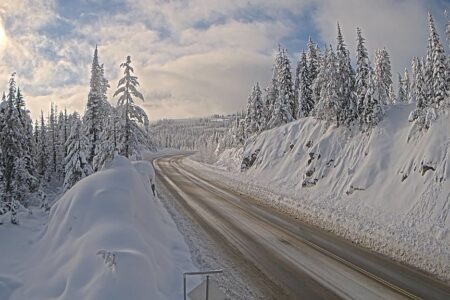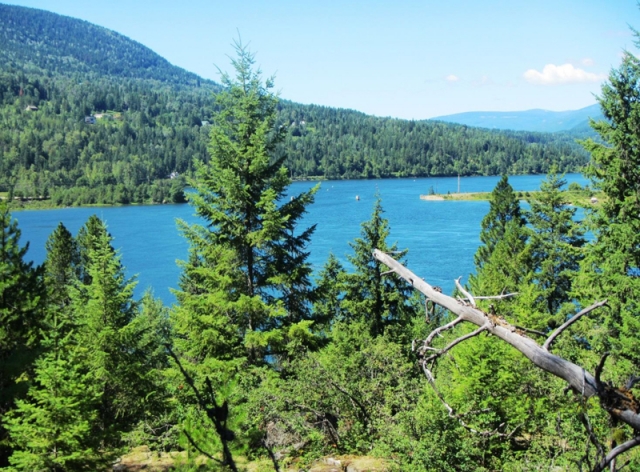Reservoir storage basic concept of Columbia River Treaty
The stage is being set for a showdown between Canada and the US over the post 2014 Columbia River Treaty as the two countries recently stated radically different visions for the upcoming renewal of the cross-border agreement.
The province wants to keep things much as they are with some improvements and more cash flowing from the agreement, while the Americans want to overhaul it from the ground up.
The Nelson Daily is expanding the editorial team, inviting Eileen Delehanty Pearkes to explain to readers the importance of the Columbia River Treaty to the region.
Since 2005, Eileen Delehanty Pearkes has researched and explored the natural and human history of the rivers of the upper Columbia River Basin. She speaks frequently at conferences and symposia throughout the Basin on the history of the Columbia River Treaty and its effects on Basin residents. She has recently completed a manuscript titled A River Captured – history and hydro-electricity in the upper Columbia Basin.
An American by birth, Pearkes has been a resident of Canada since 1985 and Nelson since 1994. She has written many articles and several books that explore place and its cultural meaning.
The Geography of Memory, a history of the landscape and indigenous people of the upper Columbia watershed published in 2002, remains a Kootenay classic.
Recently, the National Geographic website listed Nelson as one of 10 less-famous ski towns to watch. Alongside the on-line article http://adventure.nationalgeographic.com/adventure/trips/best-emerging-ski-towns/#/skiier-whitewater-british-columbia-canada_64710_600x450.jpg
was a gorgeous shot of Whitewater after one of its epic snowfalls.
Most of us have seen photos like it lots of time. Sometimes, our back yards look like this. Yes, indeed, they call it WHITEwater for a reason. The ski area at the base of Ymir Mountain catches bowls full of snow every winter. Bowls and bowls full of the white stuff.
Ever notice the back half of the name of our locally owned, legendary ski hill? It’s white, and its WATER. Everyone knows what happens to snow in spring. It melts. In the Pacific Northwest, people are waking up to the importance of this annual liquid gold.
Nelson sits amid the upper mountain ranges of the 4th largest watershed in North America – the Columbia River Basin. This massive watershed encompasses portions of British Columbia and several U.S. states (Washington, Idaho, Oregon and Montana among them).
The Columbia Basin covers an area the size of France. And although the portion sitting above the international boundary makes up only 15 percent of its land mass, B.C.’s mountains provide up to 45 percent of the Columbia’s entire water volume.
That’s largely because of the snow we love to rejoice in or complain about at this time of year. Hydrologists call the Columbia River a “snow-charged” waterway.
Ecologist E.C. Pilou calls snow “nature’s reservoir,” which means that winter holds all the precipitation in a frozen state. Piles and piles of it accumulate all season long, as if being collected in a giant jar. In spring and summer, the snow gradually liquifies, moves down the mountains and fills the river system.
It’s this once-a-year Canadian water bonanza that American hydrologists were intent on capturing and regulating when they approached Canada in 1945 about developing dams on the Columbia River north of the boundary.
At that point, no major dams existed on the river’ main stem in Canada. This region had several dams, but they were on the Kootenay River system between Nelson and Castlegar, built by West Kootenay Power and Light, a subsidiary of Cominco today known as FortisBC.
The City of Nelson also had a power station opposite one of the Bonnington dams.
The five dams Upper and Lower Bonnington were built in the early 20th century. South Slocan Dam (1928), Corra Linn (1932) and Brilliant Dam (1944) followed suit and together, they provided local domestic electricity needs as well as all that the power-hungry Cominco smelter could use. But these dams were locally controlled.
And they were for an entirely local purpose. The dams being proposed by the Americans were international and emphasized storage. More storage than Nature could naturally provide through snow.
Water storage through construction of reservoirs is a concept basic to the design and implementation of the Columbia River Treaty, a 1964 agreement between Canada and the United States that transformed the upper watershed’s ecology and culture.
The public may have heard that this treaty could be up for renegotiation starting next year.
Americans and Canadians are lining up on either side of the boundary, getting ready with their bar graphs, calculations of value and water needs.
It’s going to be an interesting conversation . . . one we will learn more about in in future Water Talk columns.
























Comments